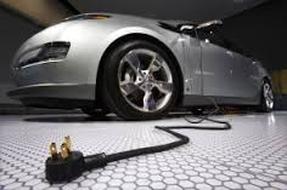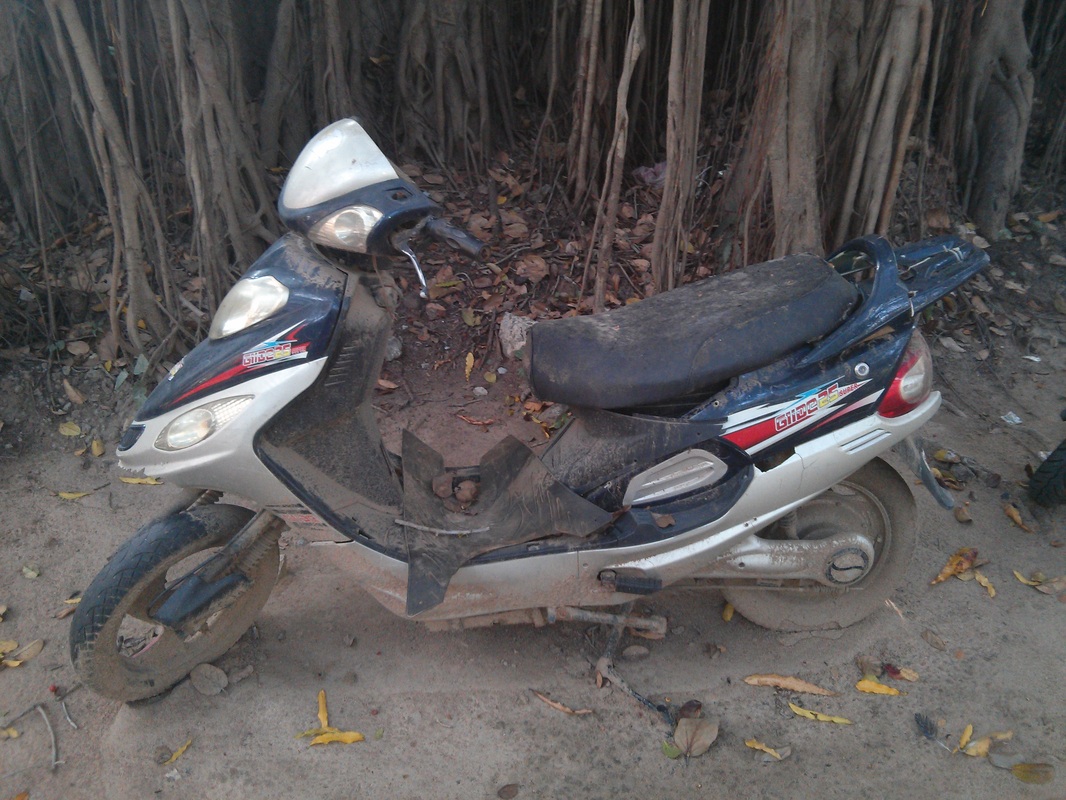Brief: as an entrepreneur interested in the EV domain, I have spent the last few months meeting and talking to a host of electric vehicle owners. At Ather originally we thought that the electric scooter market is big and interesting and thus, we should make kick-ass batteries for these guys. In time we realized that the scooters themselves are no great shakes either – which has led us to now completely re-design and re-engineer electric scooters for the Indian market. Expect us to showcase the same by March end!

Dr. Sivakumar bought a BSA low-power electric scooter (250W) a few years back. He was in fact the ninth customer to own a BSA scooter and the company even acknowledged the same. He bought the scooter because he is a self-proclaimed early adopter and loves to try new technologies. The silent ride of an electric scooter, running without fumes was incentive enough for him to buy one. He in fact became one of the earliest and most prominent evangelists for these electric scooters in the IIT Madras campus.
He’s had his batteries changed three times in as many years. His charger has been replaced twice. The poor lead-acid batteries that he replaces every time typically last him between 6 to 12 months before they start ‘dying’ – a term that means that their capacity starts going down. It’s not unnatural for a battery, every battery loses its capacity over time. However lead acid batteries lose them at an alarming rate in an electric vehicle. He’s not had a battery that’s lasted him for more than 15 months yet. By the end of the life these batteries are delivering a range of 10-15 kms per charge. Which is almost an 80% reduction over the original range.
When he bought them, he felt a top speed of 25 kmph in the IIT Madras campus would be acceptable. What he had not counted on was his experience while taking it outside the campus area. It is practically impossible to drive these vehicles on a city-road. It’s downright dangerous. Eventually, he had his traction motor also changed in frustration.
The build and ride quality of these bikes also left a lot to be desired. Within no time of purchase, the cheap Chinese manufactured plastic body panels starting dropping down. Components started rusting and the entire vehicle looks to have aged years before its time. The suspension seems to have been an after-thought and barely functions. Dr. Sivakumar believes that the company does not seem to have spent a lot of time in actually engineering this vehicle. It looks like a retro-fit version of a cheap petrol scooter-turned-electric. Nobody seems to have paid attention to the changed mass distribution and driver ergonomics in designing these.
Dr. P. Sriram, Dean of Administration at IIT Madras, bought an electric scooter a few years back. He owns a car and has another petrol scooter also. He bought this scooter purely because it was a greener alternative to his petrol vehicles and was remarkably quieter – something he prefers in the campus environment. His biggest issues are with the battery life, ride quality and power. He wants to have a boost mode on his vehicle which can allow him to have a high acceleration, even though the top speed may be limited.
Dr. Sudarsan of the Humanities department bought an electric scooter because he wanted a non-polluting vehicle. He has been profoundly disappointed by what he says is the ‘tendency of Indian companies to short-change Indian customers’. Within 15 months his batteries completely died on him and there were no vendors left out there who could replace his batteries. It took months, and some help from the author, for him to finally reach out to a competitor’s vendor to replace his battery pack and get the vehicle started again. He describes the ride quality of his scooter as ‘worse than that of a cycle’.
Mr. Prateek Hegde owns a Mahindra Reva (with lead acid battery). He bought an electric vehicle because he wanted to ‘cause minimum pollution at least inside the city’ and because he wanted a ‘small compact city car that handles well’. His experience was mixed. While the vehicle delivered on the promise of being a small and compact car, it made him regret his decision owning to the poor battery life and build quality.
“The hatch came apart within weeks of purchase. And then Reva shut down their service center in Chennai making it immeasurably hard to get the car serviced”. Additionally, after four years and 18,000 kms his lead-acid batteries died on him. The cost of replacement? An astronomical 90,000 rupees. This was a deal-killer. He finally junked his car, which to this day is idling in his garage – a fate shared by EVs all over the country.
I have written about only four of the people here but the IIT campus is full of similar cases. I have personally met dozens of EV owners and the experience of almost every single of them has been remarkably similar. How did the larger companies fail to see these problems then? At Ather we believe that they were looking at the right market but had a terribly wrong product for it. I haven’t many, who, after a year of usage haven’t been disappointed by their electric vehicles in India [2]. The customers are begging for a better product. Are the problems so deep and hard to understand? Obviously not.
It does not take a rocket scientist to figure out the biggest problems faced by these people:
- Batteries – lead acid batteries are an extremely bad choice for EV applications. The entire experience is ruined for the user owning to their extremely limited life and performance. They need to be replaced by a better alternative.
- Build and ride quality – in his interactions, the author hasn’t met anybody who was happy with their vehicle’s build or ride quality. Often, the suspensions were put in orientations so flawed that it made one wonder whether engineers were involved at any stage of the development of these vehicles [3]. Another point that came about from these interactions: these aren’t locally made or designed vehicles. These are (with some noteworthy exceptions like the Mahindra Reva) Chinese knocked-down units imported and assembled in India. These vehicles were designed to have a shelf-life of 3-4 years and were designed for the factory workers in China. No doubt, it makes a lot of sense for a blue-collar worker in one of the innumerable factories in China to buy these vehicles at dirt-cheap prices (locally these vehicles sell for as low as 10,000 rupees). But for somebody in India, who can afford a Honda City and is purchasing these scooters purely because he’s excited about the technology or wants a greener solution for his mobility needs – they are a very, very bad idea.
- Performance – a top speed of 25 kmph does not cut it any longer. Such low speed vehicles make sense in the Chinese context, where there are mandated cycle lanes and these vehicles often get to share space there. But in the Indian context where these vehicles have to share road space with a Royal Enfield and an angry bus driver, it is downright suicidal to take them to road. Everybody, and I mean everybody, who’s driving will whiz pass you and you will be relegated to a small corner trying to hold on to yourself as you are stuck by sheer terror.
The coming generation of EVs will potentially be targeting the above problem head-on. Batteries, quality and performance – the three bane of electric vehicles today will eventually turn out to be the real USPs in the coming years [4].
Today, typically people automatically assume that an electric vehicle cannot deliver decent performance and is meant only for children or the elderly. This is an incorrect assessment of an electric drivetrain drawn from a set of poorly designed vehicles.
Electric vehicles have the capability to beat a petrol alternative on any conceivable parameter. Whether it be speed, or torque, or comfort, or overall weight, or space or even total cost of ownership – a smartly designed electric vehicle can better a petrol vehicle hands down. It just takes that extra design effort. Tesla Motors of California and Mission motorcycles have demonstrated the superiority of an electric drive. It’s only a matter of time before we have similar vehicles on Indian roads.
Of course, it is not all bad news. The latest Auto Expo seems to have some exciting electric vehicles. Reva finally seems to be coming up with a car that actually looks neat. Some of the automakers finally seem to be realizing the limitations of lead-acid cells and are trying to make the transition to lithium ion. We ourselves are working on a premium electric scooter.
However, most importantly, the customers aren’t lost yet. Despite getting ripped off with the last generation of EVs, these people are waiting for a better vehicle. They are more than happy to test ride our prototypes, give a ton of feedback, even buy one if we could only sell them right now! That, in the opinion of this author, is the holy grail of any business – customers. And this segment does not seem to have lost it’s yet.
In fact, if anything, it only seems to be discovering them now.
Co-founder, Ather Energy
+91 9962 396 532
[email protected]
notes:
[1] some names have been changed on request.
[2] Of course, I have also met a few who felt that it is safer to ride on a slower vehicle rather than riding rashly on a faster vehicle. One must respect their beliefs, though I personally belief, that they are two mutually separate and hence solvable issues.
[3] One does hear of several innovative and isolated experiments where companies tried to bring the engineering in-house, but failed. The truth is, if you are going to build an exactly similar product (low speed, low quality) – there isn’t much sense in bringing the design or the manufacturing in-house. It’s cheaper and more sensible to do that in mass in China.
[4] I am obviously confident, that there will be many more changes than just the three highlighted ones. This is just to show that these are the three current challenges. Improving on these is mandatory.

